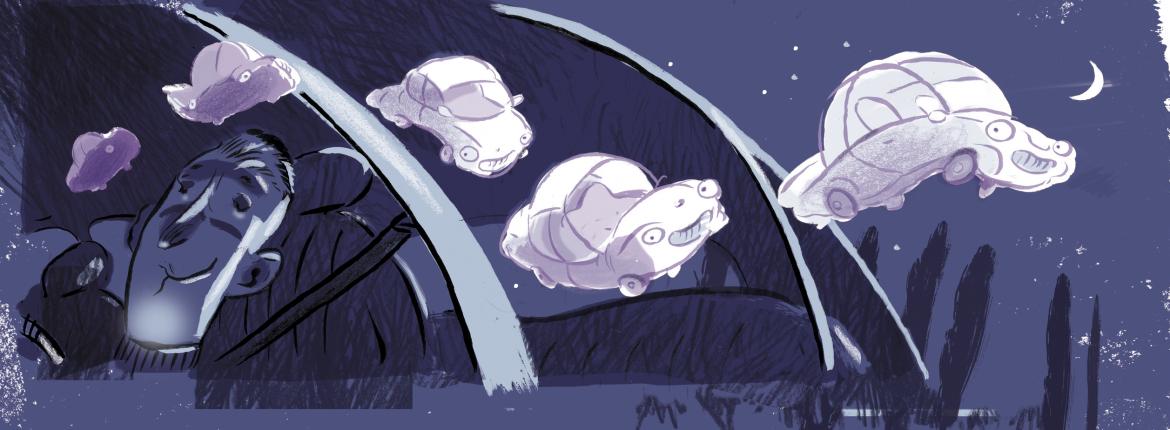As one of the keynote speakers at the AA Research Foundation’s symposium on driver inattention, distraction and fatigue in September, Dr Richard Jones called attention to this surprisingly common phenomenon and why drivers should be aware of it.
A microsleep is defined as a brief loss of consciousness for between 0.5 to 15 seconds (more than 15 seconds is classified as sleep). In that time a person is completely non-responsive, and their eyes fully or partially closed, until they snap back to normal awareness, quite possibly unaware of their lapse.
Jones and his colleagues at the Christchurch Neurotechnology Research Programme have been studying microsleeps for several years and their findings indicate they happen a lot. People taking part in the research did visual tracking testing, like using a joystick to continuously follow a target on a monitor while their brain activity and eye movements were recorded. This allowed the researchers to see exactly what was happening, if they lapsed during the test.
In one of their studies, the average number of lapses per person was 39 over a one-hour period, with an average lapse duration of 3.4 seconds.
In another study, 80% of the subjects had microsleeps even while being tested in a noisy and uncomfortable MRI scanner. The average rate of microsleeps per person was 79 in one hour, with the average duration being 3.3 seconds. Eight people had some lapses of more than 15 seconds.
The frequency was a shock for the researchers.
“When we did our first study, we were hoping we might get one or two people having a microsleep,” says Jones. “The numbers took us by surprise and if you told a subject at the end of a test, ‘Did you realise you had 120 microsleeps in that hour?’, I’m sure they would have been completely blown away.”
The idea that our brains are naturally inclined to switch off momentarily, particularly when engaged in a monotonous or repetitive activity, is obviously of huge importance to road safety, but Jones makes it clear this research is not saying we are all constantly nodding off while driving.
“Our tests are in laboratories where there are no consequences for lapses of concentration of a few seconds, like there would be if you were driving; and we think the consequences of having a microsleep does alter your propensity to have them.” He is sure microsleeps do play a significant role in crashes on our roads, though.
“It’s impossible to prove whether someone who drifts into oncoming traffic or doesn’t take a corner was having a microsleep because you can’t test for it afterwards. But, our research does indicate there is a strong propensity for people to have them and there is no doubt at all that a lot of the serious accidents on the road involve microsleeps.”
In terms of the relationship between microsleeps and fatigue, the participants in the tests had had their sleep measured for a week beforehand to ensure they were fully rested, so tiredness was not a factor. However, the researchers got one group to do a second test when they had only had four hours’ sleep the night before, and the number of microsleeps they had jumped higher.
Some car manufacturers are investigating technology where video cameras monitor the driver’s eyes and an alarm is sounded if they are judged to be drowsy but, while this is a positive step, Jones doesn’t think it is the ultimate solution. His team is focussed on establishing what happens in the brain when a person is about to have a microsleep, with a view to one day being able to prevent them happening.
For example, he can imagine technology where commercial drivers or air traffic controllers wear caps that monitor their brain activity and alert them when they are about to nod off.
As for now, Jones thinks that being more aware of microsleeps, and especially the increased risks when tired, is the best defence drivers have against them.
“If you pick up the signs you are getting drowsy, the best thing to do is stop driving. If you have to keep going the two best things are to drink coffee, which does work, or stop somewhere safe and have a power nap of about 15-20 minutes. If you have any more than 20 minutes you’ll probably come out of it too drowsy.”
Reported by Dylan Thomsen for our AA Directions Summer 2011 issue




